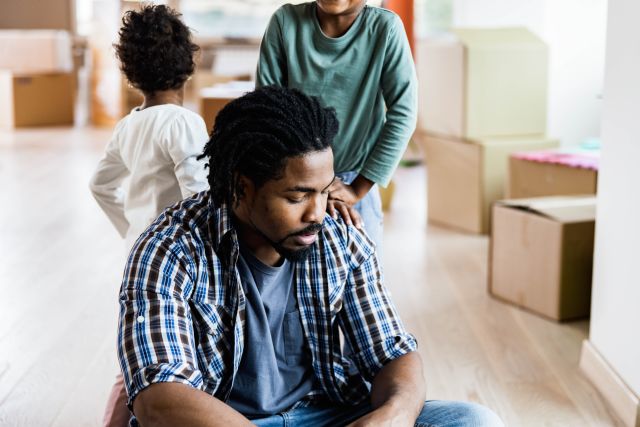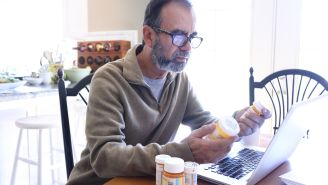Updated on September 26, 2024.
Consider the following statistics:
- Black, American Indian, and Alaska Native women are at least three times more likely to die in pregnancy or childbirth than white women.
- Black children are at three times higher risk of losing their mothers by age 10, compared to white children.
- Asian Americans are about 80 percent more prone to end-stage kidney disease.
- Latinx people are more likely to have obesity, high blood pressure, and diabetes—all risk factors for serious long-term conditions like heart disease.
Meanwhile, Black and Hispanic people are more likely to experience severe depression compared to white people, according to a 2020 study published in JAMA Network Open—with Black people with depression being 61 percent less likely than white people to report being treated for their condition.
What accounts for these dramatic discrepancies in health?
While some inherited factors may influence the risk of illness, the vast majority of differences in health outcomes between people of color and white people stem from community, economic, and environmental circumstances. These factors—also known as social determinants of health—result from deeply rooted patterns of inequality in American society. What's more, different forms of discrimination affect how people of color are treated everywhere from clinics to job settings, which can lead to even further inequity in people’s health and lives.
“Too often, scientists tend to stop at the end of sentences like, ‘Black people have a greater risk of dying from [insert condition here],” says Kylie Smith, PhD, associate professor at the Nell Hodgson Woodruff School of Nursing at Emory University in Atlanta, Georgia, and principal investigator on the National Library of Medicine-funded project, Jim Crow in the Asylum: Psychiatry and Civil Rights in the American South.
It’s important to follow that up with ‘because,’ Smith explains, so people—including healthcare providers—understand the context for why people of color are more likely to get sick than white people. This ‘because’ can be explained, in large part, by systemic inequities that have plagued America for centuries and that persist today.
Understanding the roots of health disparities
Making sense of differences in health outcomes based on race starts with looking at social determinants of health (SDOH). These are the conditions in the places where people are born, live, learn, work, play, worship, and age. They affect a wide range of health and life outcomes and risks, according to the Centers for Disease Control and Prevention (CDC).
SDOH include access to safe housing, nutritious food, and healthcare services, as well as education and job opportunities. These determinants also influence whether communities have safe public transportation and clean air, water, and green spaces.
Across many dimensions of daily life, the legacy of segregation in the United States has created inequalities that can set communities of color on paths toward poorer health. For example:
- Black families are more likely than white families to live in areas with excessive air pollution, which can lead to asthma and lung damage.
- People of color are more often exposed to water systems tainted with lead or other impurities, such as in Flint, Michigan. This can cause neurological damage and can lead to severe problems in children’s development. Black children in America are three times more likely than white children to have high levels of lead in their blood.
- People of color are more likely to live in neighborhoods that lack well-stocked grocery stores and safe parks, which hurts access to healthy food and outdoor exercise. This can make people more prone to conditions like obesity, diabetes, and high blood pressure.
It’s important to note, however, that even when people have the same wealth and education levels across racial and ethnic groups, people of color still experience worse health outcomes.
This may be due, at least in part, to the mental and physical toll that comes from regularly facing discrimination in many settings, including school, work, housing, and interactions with law enforcement. This unrelenting daily stress often overwhelms the physical responses that keep bodies working properly. In turn, this puts people of color at increased risk for a number of serious health issues and tends to make them sicker sooner in life.
Inequities in healthcare
Economic, workforce, and other factors can make it harder for people of color to access good health insurance, as well. Even when they have the right coverage, people of color may not receive the same quality of care.
“When people of color, regardless of wealth or education level, do access the health system, they’re often faced with discriminatory practices,” says Lisa Muirhead, DNP, APRN, Associate Dean for Equity and Inclusion at Emory’s School of Nursing. “The burden of constantly seeking equitable care is time-consuming, stressful, and outright exhausting. Repeat exposures to discrimination can cause people of color to distrust healthcare providers.”
“The long history of unequal and unethical health care in our country traces all the way back to slavery," Smith adds. “The knowledge of this history and the experience of racism are very real and can keep people from accessing healthcare regardless of insurance status.”
A public health emergency
The COVID pandemic—with its disproportionate effect on people of color—laid bare the racial health disparities that have plagued the United States for centuries. In the wake of the pandemic and the Black Lives Matter movement, more communities are trying to address the problem.
Racism has been declared a public health emergency in more than 90 counties across the U.S. Several counties have pledged to rally political energy to close racial health gaps. Many more are studying the ways in which related systems—like local economies and the criminal justice system—overlap to put communities of color at greater risk for violence and disease.
Take Louisville, Kentucky, where Breonna Taylor was shot and killed by police who entered her apartment in the early morning of March 13, 2020. Life expectancy varies so much by neighborhood that people in majority-white Eastern Louisville live nearly 12.6 years longer on average than those in predominantly-Black Northwestern Louisville. By declaring racism a public health emergency, leaders and communities in Louisville committed to treating 11 locally identified causes of racial injustice, including income gaps, environmental exposures, and criminal justice problems.
Major medical organizations have been following suit. In November 2020, the American Heart Association (AHA) published a “Call to Action” in the journal Circulation, arguing that racism is a cause of persistent health disparities in the U.S. In its report, the AHA noted: “Structural racism prevents us from achieving health equity for all we have the opportunity to serve. Our work must advance the science to understand structural racism and its effects on health, how to eliminate its adverse consequences, and how to offer concrete, science-informed solutions, and actionable steps and programs to improve health and well-being, to achieve equitable health for all.”
What everyone can do to help
People of color cannot bear responsibility for the broken systems that are making them sick. Every person who holds power or privilege needs to examine their own role in upholding systems that disadvantage others. You don’t have to be a nurse, healthcare professional, or politician to improve your community. But you do need to participate in finding solutions.
That involves addressing the social determinant and environmental circumstances that often define communities of color and working to ensure that all communities have access to clean water and air, quality education, health care, and economic opportunity.
Beyond working to create well-being across and within communities, it is also critical to break down racism at its core. This begins with confronting racist thinking in its various forms and developing programs and policies that address systemic racism. It includes:
- Studying and understanding the history of systemic inequality in the U.S.
- Supporting diversity and inclusion efforts in the workplace, especially in health and medical fields
- Voting for public officials whose policies are tied to equality
“To be an ally means to commit to walking in solidarity for racial and social justice,” says Muirhead. “What truly counts is when someone is willing to use their voice to speak against injustice, even when no one’s watching.”
“It’s common to have this feeling that racism is something that just sort of happens magically,” adds Smith. “But racism doesn't come out of nowhere.”
Unequal systems—in health care, housing, and elsewhere—are the result of policy decisions that have been made and carried out, over the centuries, by everyday people, she says. “These decisions will stand until someone steps up to change them. We made them, so we can unmake them.”
Read more about the health effects of racial inequities.







